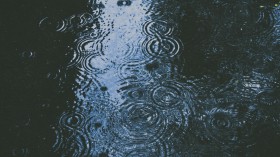Spilled crude oil from the Deepwater Horizon oil spill in the Gulf of Mexico sickened Gulf fish species for more than a year after the disaster, according to new research.
Gulf killifish embryos exposed to sediments from oiled locations in 2010 and 2011 show developmental abnormalities, including heart defects, delayed hatching and reduced hatching success, the researchers report.
Killifish are abundant in coastal marsh habitats along the Gulf Coast. Because the fish are non-migratory, the researchers say killifish are ideal subjects for a study of the health of ocean life in the wake of the oil spill.
The researchers collected Gulf killifish from an oiled site at Isle Grande Terre, La., and monitored them for measures of exposure to crude oil. They also exposed killifish embryos in the lab to sediment collected from oiled sites at Isle Grande Terre within Barataria Bay in Louisiana.
While the study only focused on Gulf killifish, other species that share similar habitats are redfish, speckled trout, flounder, blue crabs, shrimp and oysters - researchers say they may be at risk of similar effects. The killifish is an environmental indicator species, or a "canary in the coal mine," used to predict broader exposures and health risks, according to a press statement from the researchers at University of California, Davis.
"These effects are characteristic of crude oil toxicity," said co-author Andrew Whitehead, an assistant professor of environmental toxicology at UC Davis. "It's important that we observe it in the context of the Deepwater Horizon spill because it tells us it is far too early to say the effects of the oil spill are known and inconsequential. By definition, effects on reproduction and development - effects that could impact populations - can take time to emerge."
Whitehead said the report's findings may predict longer-term impacts to killifish populations. However, oil from the Deepwater Horizon spill showed up in patches, rather than coating the coastline. That means some killifish could have been hit hard by the spill while others were less impacted.
Whitehead said it is possible that some of the healthier, less impacted killifish could buffer the effects of the spill for the population as a whole.
The study was published in the journal Environmental Science and Technolgy.
© 2024 NatureWorldNews.com All rights reserved. Do not reproduce without permission.





